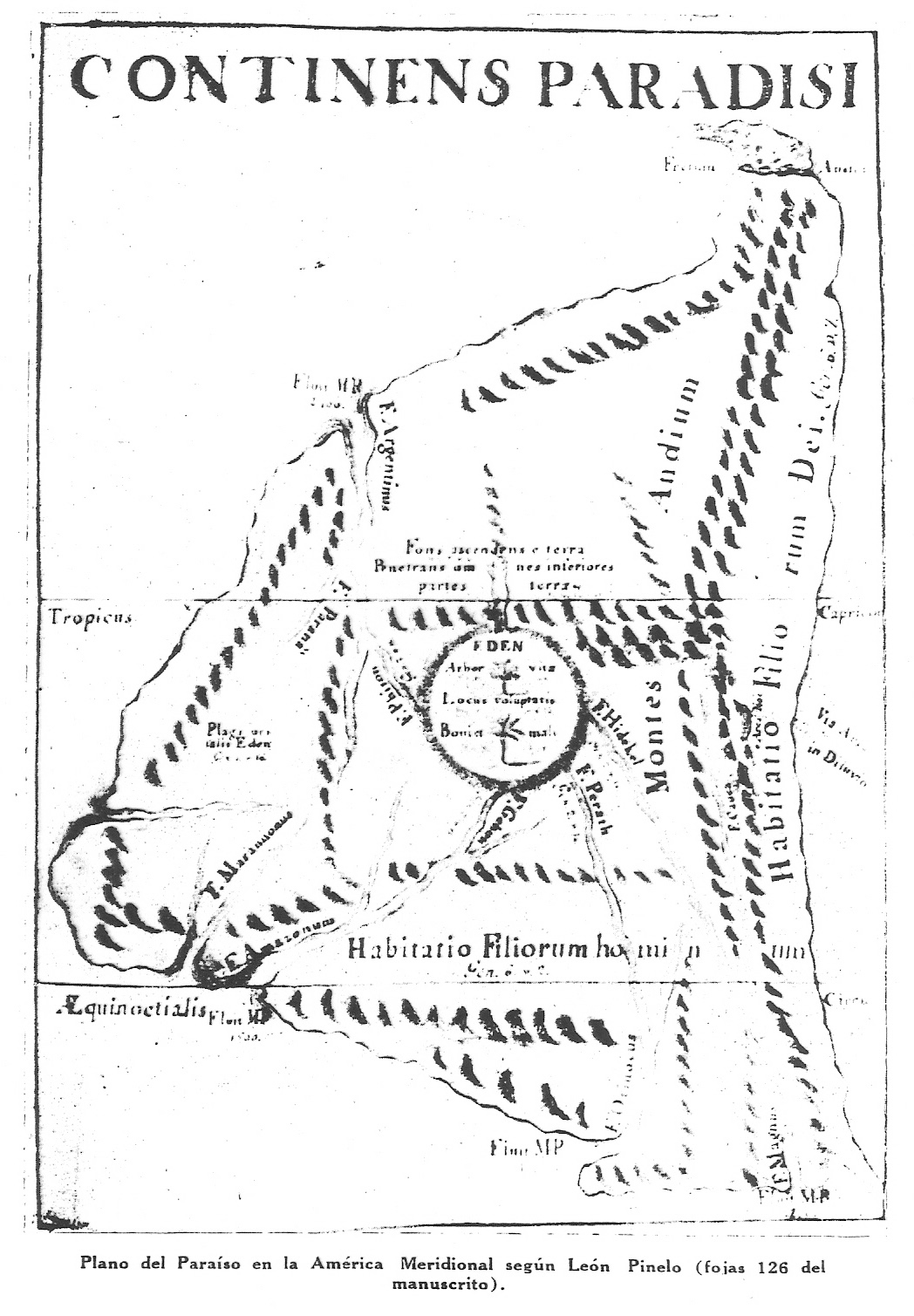Peruvian Creole Antonio de León Pinelo (1590– 1660) located Paradise on the eastern slopes of the Andes. He identified three habitat zones in South America, each distinctively rich in its own way: the hot, low-lying areas of the coastal plain and the Amazon basin, the mid-altitude plains or llanos, and the high-altitude sierras. León Pinelo’s scheme drew upon Jesuit observations, but these were likely informed by Quechua classifications, which then and now, named at least four zones: yunga or hot lowlands; chawpi or intermediate, subtropical slope; quechua or high temperate valley; and puna or cold alpine grassland or tundra. These microclimates made Peru hospitable to nearly all crops and products and to year-round productivity. Thus, whereas some American plants were not easily acclimatised in Europe, all European crops yielded harvests in Peru, claimed León Pinelo.
CONTINENS PARADISI
Map of Continens Paradisi. A. de León Pinelo, El Paraiso en el Nuevo Mundo: comentario apologético, historia natural, y peregrina de las Yndias Occidentales, yslas y tierra firme del mar océano (Madrid, 1656).
By Jorge Cañizares-Esguerra and Mark Thurner
Further reading
- Anthony, P. (2018) ‘Mining as the working world of Alexander von Humboldt’s plant geography and vertical cartography’, Isis, 109 (1): 28–55.
- Cañizares-Esguerra, J. (2006) Nature, Empire, and Nation: Explorations of the History of Science in the Iberian World (Stanford, CA: Stanford University Press).
- Cañizares-Esguerra, J. (2004) ‘How derivative was Humboldt? Microcosmic nature narratives in early modern Spanish America and the (other) origins of Humboldt’s ecological ideas’, in Colonial Botany: Science, Commerce, and Politics in the Early Modern World, edited by L. Schiebinger and C. Swan, 148–65 (Philadelphia, PA: University of Pennsylvania Press).
- Cañizares-Esguerra, J. (2001) How to Write the History of the New World: Histories, Epistemologies, and Identities in the Eighteenth- Century Atlantic World (Stanford, CA: Stanford University Press).
- Masuda, S., I. Shimada, and C. Morris (eds.) (1985) Andean Ecology and Civilization: An Interdisciplinary Perspective on Andean Ecological Complementarity (Tokyo: University of Tokyo Press).
- Murra, J.V. (1956) The Economic Organization of the Inca State (Chicago, IL: University of Chicago Press).
- Thurner, M. (2011) History’s Peru: The Poetics of Colonial and Postcolonial Historiography (Gainesville, FL: University Press of Florida).





